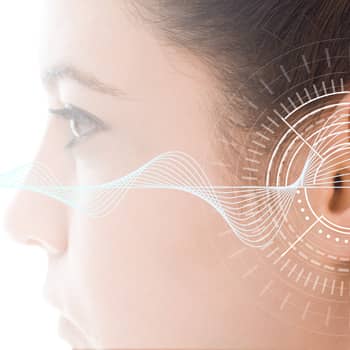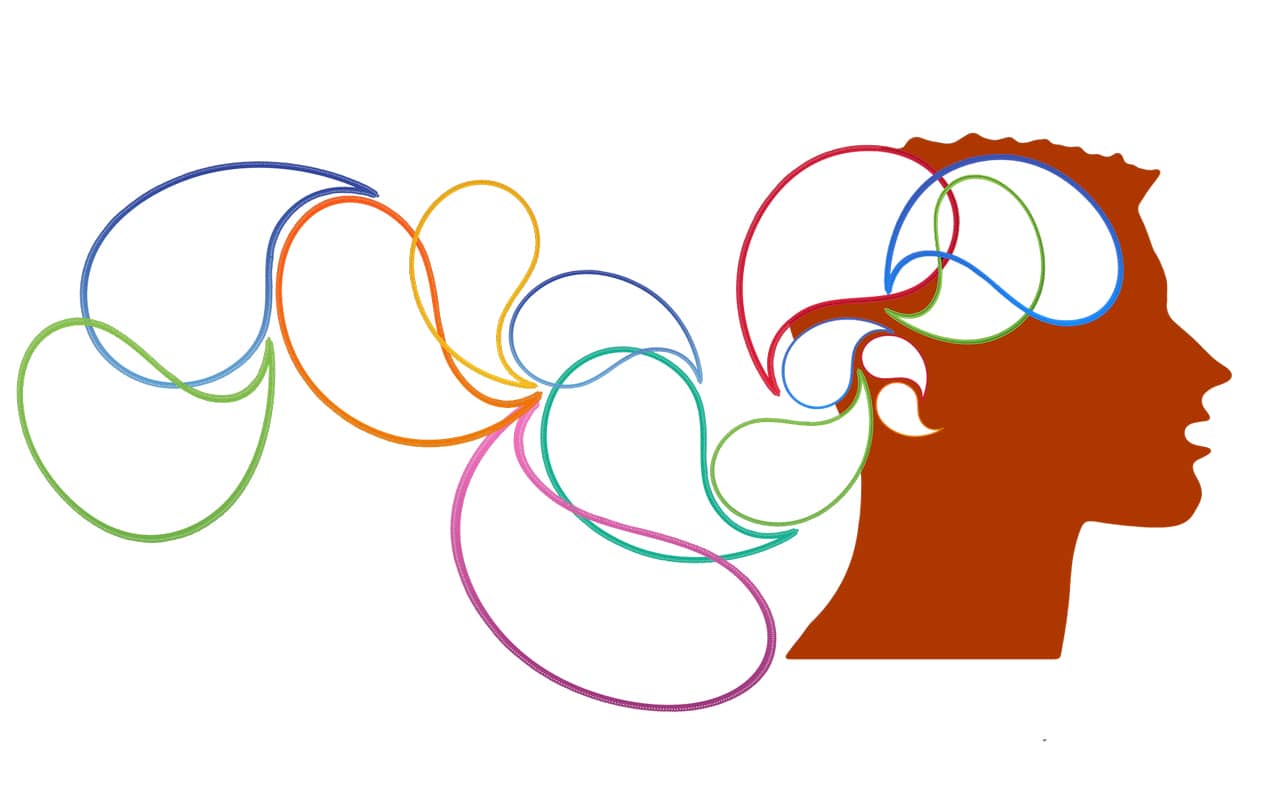 Do you ever ask someone to repeat themselves, then actually realize that you know what they’re going to say before they finish?
Do you ever ask someone to repeat themselves, then actually realize that you know what they’re going to say before they finish?
This is an example of the innate retention of your echoic memory.
Your echoic memory “heard” and stored what the other person said in temporary memory, but you weren’t actively listening to process it into your short-term memory.
This automatic but temporary auditory memory response is a component of sensory memory. Sensory memory is the first stage of memory that temporarily stores sounds and other sensory information from your environment for you to act upon.
Echoic memory has a role in our perception of auditory stimuli in our world. Our ability to understand verbal communication, learn new vocabulary words, enjoy music, and interpret other nonverbal sounds all start out in echoic memory.
If you’d like to improve your memory, learn a new language, memorize music, or you’re curious about how your memory works, this guide is for you.
Here’s what this post will cover:
What is Echoic Memory?
Iconic vs Echoic Memory
Examples of Echoic Memory
How Long Does Echoic Memory Last?
How Echoic Memory Helps With Memory Training
First off, let’s define what we mean by echoic memory.
What is Echoic Memory?
Our senses play an important role in creating memories.
Memories start by receiving sensations from our five senses. External stimuli, whether they’re visual, auditory, or tactile, are deposited very briefly into our Sensory Memory.
Within seconds, we interpret the stimuli and process it further into Short-Term Memory or abandon the sensation, making room for more sensory input.
Echoic Memory Definition:
Echoic Memory is the distinct sensory memory that temporarily holds representations of sounds that we hear, queued for processing further into short term memory. This temporary storage process is completely automatic, and requires no conscious effort.
Most of the auditory information we receive into echoic memory fades away, because focused attention is required to process the auditory information into short- and long-term memory.
Later in this post, we’ll discover how this “auditory register” helps us understand the spoken word, recognize familiar voices, and interpret and enjoy music.
But first, let’s explore how environmental sounds enter our brain and undergo a chain of physiological transformations that potentially convert them into memories.
How Sound Travels In Our Brain
Sound waves cause vibrations in our eardrum, middle ear, and inner ear. These vibrations are converted into electrical impulses that are picked up by the auditory nerve and delivered to the primary auditory cortex (PAC) contralateral to the ear that heard the sound.
We have two primary auditory cortices that very briefly retain these sound representations until they’re either abandoned or moved on to the hippocampus for processing into short-term memory. Remarkably, this persistent activity is automatic and unfiltered.
Considering our often noisy surroundings, it’s easy to assume that our echoic memory would have trouble keeping up with the rapid-fire barrage of sounds that it receives. But, that’s simply not the case.
Echoic memory is constantly “on,” meaning that your brain automatically picks up sounds and stores them, albeit briefly. Of course, the critical step in processing sounds into short-term and long-term memory is your attention to those sounds, otherwise known as “active listening”.
Active Listening Unveils Echoic Memory
Discover your echoic memory with this quick exercise:
- Set a timer on your cell phone for 1 minute. Disable any noise-cancelling devices and get comfortable. Start the timer, close your eyes, and just listen. (Go ahead… Give your eyes a rest!)
- When the alarm rings, give yourself another minute to recall and list the nonverbal sounds you heard.
- Now that you have your list, check off the ones that you recall hearing before you closed your eyes.
Likely, you “heard” more sounds when you weren’t preoccupied with reading. Most of these sounds, especially the sounds of your own breathing, were likely present all along but were buffered out (i.e. ignored) when reading was your main focus.
Active listening is an excellent way to increase your awareness of your echoic memory.
For example, challenge yourself to tune in to nonverbal sounds during a morning walk or concentrate on counting ringtones, text dings, IM notifications, and other electronic sound effects in a coffee shop.
Your echoic memory starts the chain of events that move the sounds into your short-term memory. After your sessions, log all the sounds you remember in your memory journal.
Just as your sense of hearing picks up sounds that you selectively process into memory, your other senses similarly tee up distinct sensory information to potentially store in short- or long-term memory.
Sensory Memory Studies and Discoveries
The concept of sensory memory was first conceived in the late 1960s by George Sperling, who identified iconic (visual) memory as an extremely short-lived representation of our visual field before it’s discarded, replaced, or processed into short-term memory.
Shortly after Sperling’s studies, Ulric Neisser coined the term to describe aural memory as ‘echoic memory’ based on his studies of the brief auditory component of sensory memory.
Later adopted as the first stage of the Akinson-Shiffrin stages of human memory model, the sensory register (Sensory Memory) represents the brief staging of data detected from all of our senses prior to either getting discarded or transferred to short-term memory.
Let’s take a deeper dive into two predominant types of sensory memory: Iconic and Echoic Memory.
Iconic vs Echoic Memory
Sensory memory is derived from sensations obtained by all of our five primary senses:
- taste (gustatory memory),
- smell (olfactory memory),
- touch (haptic memory),
- vision (iconic memory), and
- hearing (echoic memory).
Of the five, our senses of vision and hearing are more prominent in our perception of our surroundings. Not surprisingly, collective research findings of sensory memory stores for sight (iconic memory) and sound (echoic memory) are more extensive and conclusive.
Visual sensations are stored very briefly (around 200 milliseconds) in iconic memory. Auditory sensations are also stored very briefly in echoic memory, although they’re retained for a slightly longer period of time (up to 3 to 4 seconds).
But you might be able to extend your auditory memory through games and exercises like these:
This very slight difference in retention demonstrates the efficient nature of our sensory memory, given that we typically have an opportunity to scan visual sensations over and over but don’t have the same advantage with auditory sensations.
By retaining auditory information longer, our echoic memory facilitates connections between multiple sound bites which helps us understand verbal language and enjoy musical melodies.
Attentive focus helps to process information from both iconic and echoic memory to our short-term memory, but along slightly different pathways in working memory.
Alan Baddeley’s Model of Working Memory suggests that the initial process of storing memories after sensory input requires discrete manipulation prior to storage in short-term and long-term memory.
The visuospatial sketchpad processes visual and spatial information from iconic memory and the phonological loop processes words and nonverbal sounds.
In Baddeley’s model, the central executive combines information from both components with long-term memory. Note that a later addition to Baddeley’s model includes the episodic buffer component that helps transfer information with long-term memory, creating stronger memory connections.
The notion of the phonological loop suggests facilitation of language and verbal communication by making use of its two features:
- the phonological store that temporarily holds sounds, and
- the articulatory loop which revives (or rehearses) the sounds.
Additional studies have identified another involuntary response to discriminable differences between sounds held in echoic memory and incoming sounds. (Its visual counterpart is present in iconic memory.)
This function, named Mismatch Negativity (MMN), suggests that sensory memory regularly encodes an anticipated stimulus sequence without conscious attention to the sound to automatically draw attention to any change in that pattern.
Hypotheses suggest this is a way to detect errors or elicit a physical response to a potential threat in our surroundings.
It’s evident that echoic memory plays a strong role in verbal communication, the interpretation of tonal differences in conversation, and the development of language and vocabulary as a whole. But it also contributes to our ability to appreciate and recall music and other nonverbal auditory information.
Let’s take a look at some examples that demonstrate the versatility of echoic memory and how we use it to interact with the auditory aspects of our world.
Examples of Echoic Memory
Throughout your life, your brain constantly queues up sounds around you and presents them in a non-stop stream of echoic memories.
While most of these memories are discarded, echoic memory is integral in our navigation of our environment through verbal communications and other nonverbal stimuli.
Communicating Verbally (Language)
When you listen to someone speaking, your echoic memory captures every audible aspect of the verbal message and connects them together, holding them temporarily to allow your brain to comprehend entire words and sentences.
Audible aspects of verbal communication include the smaller sounds that make up the words. These individual units of sound that distinguish one word from another are called phonemes.
In addition to the blending of the phonemes that formulate words, other aspects of the speaker’s delivery (like volume, pitch, rate, or quality) are captured and retained briefly by echoic memory and help with the interpretation of the message.
Recognizing Vocal Nuances
If you’re listening to two speakers presenting a topic, your echoic memory helps to immediately distinguish one speaker from another.
Even if the sound of the speakers’ voices come from the same location in the PA system, mismatch negativity kicks in and automatically recognizes changes in the subtleties of their individual voices and redirects your attention to whoever is speaking.
Verbally Presenting or Teaching
Have you ever had an instructor that put you to sleep? Educators can empathize with this embarrassment!
When put in the position of speaking to a group, recognize that your audience’s echoic memory will take some time to process the words of your message into their short-term memory.
Even with their utmost concentration, it takes about a half a minute to process information into short-term memory after it’s been presented.
Without their attention to your words, the information starts to break down in their brains and may be processed into memory incorrectly or not at all while their eyelids start getting heavy.
It’s not that your topic is boring. (Well, maybe it is, but let’s credit your audience’s inattentiveness to echoic memory instead.)
There are ways that you can enhance the delivery of information in your lecture, help your audience listen and learn better, and bypass echoic memory overload. Check out these helpful tips:
- Display some visual charts or graphs so your students have an alternative way to process the information you’re presenting.
- Repeat important points and draw their attention to what you’re saying, like “This is important, so let me repeat this for you.” (In other words, ignite their phonological loops for them!)
- Add more color to your words to introduce some mismatch negativity.
- Appeal to their emotions, which will help encode stronger memories.
Listening to Music
Echoic memory comes into play when we listen to music. Similar to verbal sounds in speech, we hold musical notes in our auditory sensory register as we anticipate the notes that follow.
This short retention period allows us to mentally connect the notes together to process and appreciate a musical melody.
Studies have suggested that we can hold non-verbal sounds in working memory over longer time periods than verbal sounds, but the findings are not conclusive at this time.
Interestingly, affected echoic memory stores of stroke victims can be improved with regular listening sessions of music or other recorded verbal stimuli. Additionally, stroke victims with language impairment can learn and recall better when communication is presented through song instead of speech.
Keeping Us Safe
The non-selective nature of sound processing in echoic memory helps to warn us about potential threats to our well-being.
Automobile horns, sirens, alarms, and other alerting mechanisms deliberately draw our attention to alert us through mismatch negativity in our normal flow of sounds. We don’t choose to hear the alert — our brain does it for us to warn and protect us.
Silencing the Distractions
Because our echoic memory is automatic and cannot be turned off per se, it stands to reason that random sounds have the potential to interrupt concentration.
People in professions that require a higher level of concentration, students cramming for exams, and even light sleepers seek out noise-cancelling headphones that emit ambient noise and help silence or mask distractions.
Background music is commonly used as a means to help with relaxation, focus, and studying.
But a study of students’ ability to concentrate during an exam found that test scores of students were significantly higher when the test was administered in silence. This suggests that our automatic echoic memory interrupts cognitive abilities when it’s processing background noise.
We’ve learned that we have many echoic memories throughout our lives and that most echoic memories are lost without our ability to recall them. But, how long do these temporary memories really last?
How Long Does Echoic Memory Last?
Based on sensory memory duration studies, the consensus of behavioral scientists is that echoic memory lasts for approximately 2 to 4 seconds.
A notable experiment by Guttman and Julesz that demonstrated this short duration exposed subjects to repeating segments of white noise (sound with no pattern).
Subjects weren’t able to distinguish segments that were longer than a few seconds, but were able to recognize segments that were less than two seconds long. This finding suggests that our echoic memory retains an exact copy of a sound for one or two seconds.
In 1992, echoic activity was observed in the auditory cortex, lasting 2 to 5 seconds using brain scanning technology called magnetoencephalography (MEG).
Another study in 1993 (Schweickert) concluded that verbal auditory sensory memory (echoic memory) is capable of holding about 5 words for about 2 to 10 seconds.
The brevity of echoic memories combined with our selective attention to verbal and nonverbal sounds filters out ever-present noise that’s not significant for our efficient functioning within our environment.
How Echoic Memory Helps With Memory Training
Echoic memory continually processes sound from our environment. Whether we’re relaxing, communicating, traveling, or learning, we’re assisted by and protected by the natural processing within our auditory sensory register and its interaction with our short term memory.
One function of echoic memory uses its phonological loop to help us receive and understand verbal input.
Output is involved too. In order to develop vocabulary, learn, and communicate verbally with others, we not only have to hear ourselves, we also need to be able to distinguish the sounds we make from the sounds of others.
One fun experiment you can try is to sing a song with another person or with a recording. Mentally track the difference between yourself and your singing partner.
If you notice that you cannot tell the difference, you have successfully “messed up” your phonological loop and demonstrated the phonological similarity effect, where similar sounds (although not equal) seem equivalent.
It’s this kind of activity, along with what is called the Orientation Association Area of the brain, that helps explain the feeling of “oneness” people feel when singing or reciting affirmations together at church or chanting as part of a group.
When in the process of memorizing lyrics and music, poetry, or passages of a speech, leverage your phonological loop to smooth out problem phrases or areas where you make mistakes during your recall rehearsal.
But it’s not all about fun activities like sensory learning and singing. Echoic memory also alerts us to changes and potential threats in our surroundings through mismatch negativity.
Horror and suspense movies tinker with this part of our brain all the time. For example, they will use different speakers in the theatre and specific frequencies to create the illusions that threats are present relative to your location in the room.
William Castle was a film director who innovated many such techniques, many of which influenced Alfred Hitchcock. Never forget: movies are not nearly as visual a medium as we think. 80% of what we “see” is actually sound.
Echoic memory has a role in memory training, as it’s often the first sensory memory component that’s engaged in creating and storing a memory.
You can also leverage your echoic memory and alternative sensory stores to create auditory sensory memory palaces instead of visualizing them. Check out these 5 memory palace examples too!
Your personal memory palaces used with proven memory training will help you improve your memory and launch your ability to recall more information than you imagined possible. To learn more about Memory Palaces, sign up your free memory training kit today!
Related Posts
- MMMP 009: Memory Training Consumer Awareness Guide
Here's an audio presentation of The Magnetic Memory Method "Memory Training Consumer Awareness Guide."
- The 3 Stages of Memory: An In-Depth Guide (with Examples!)
There are 3 stages of memory. This in-depth guide explains each with detailed examples. Learn…
- Memory Athlete Braden Adams On The Benefits Of Memory Competition
Braden Adams is one of the most impressive memory athletes of recent times. Learn to…










